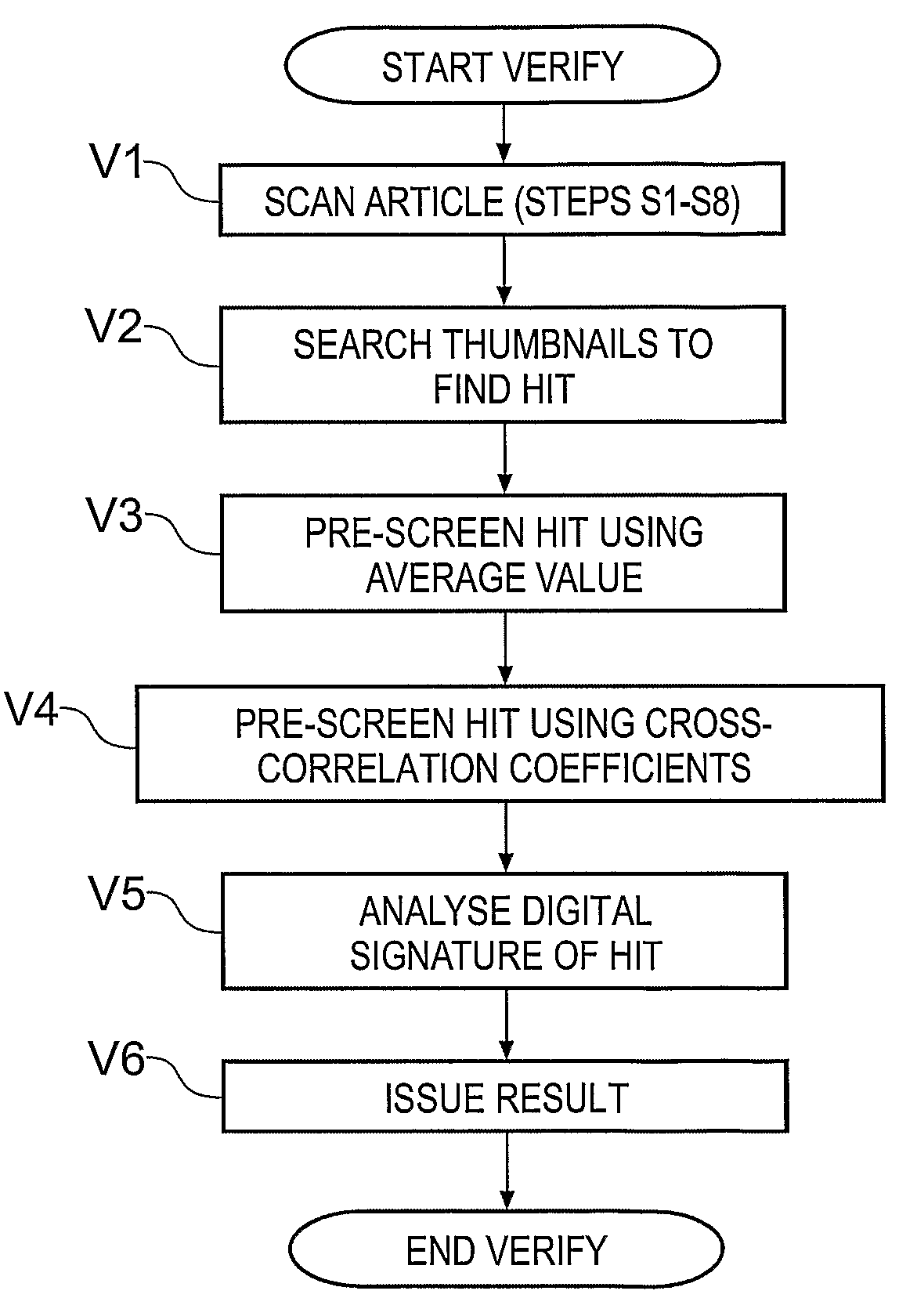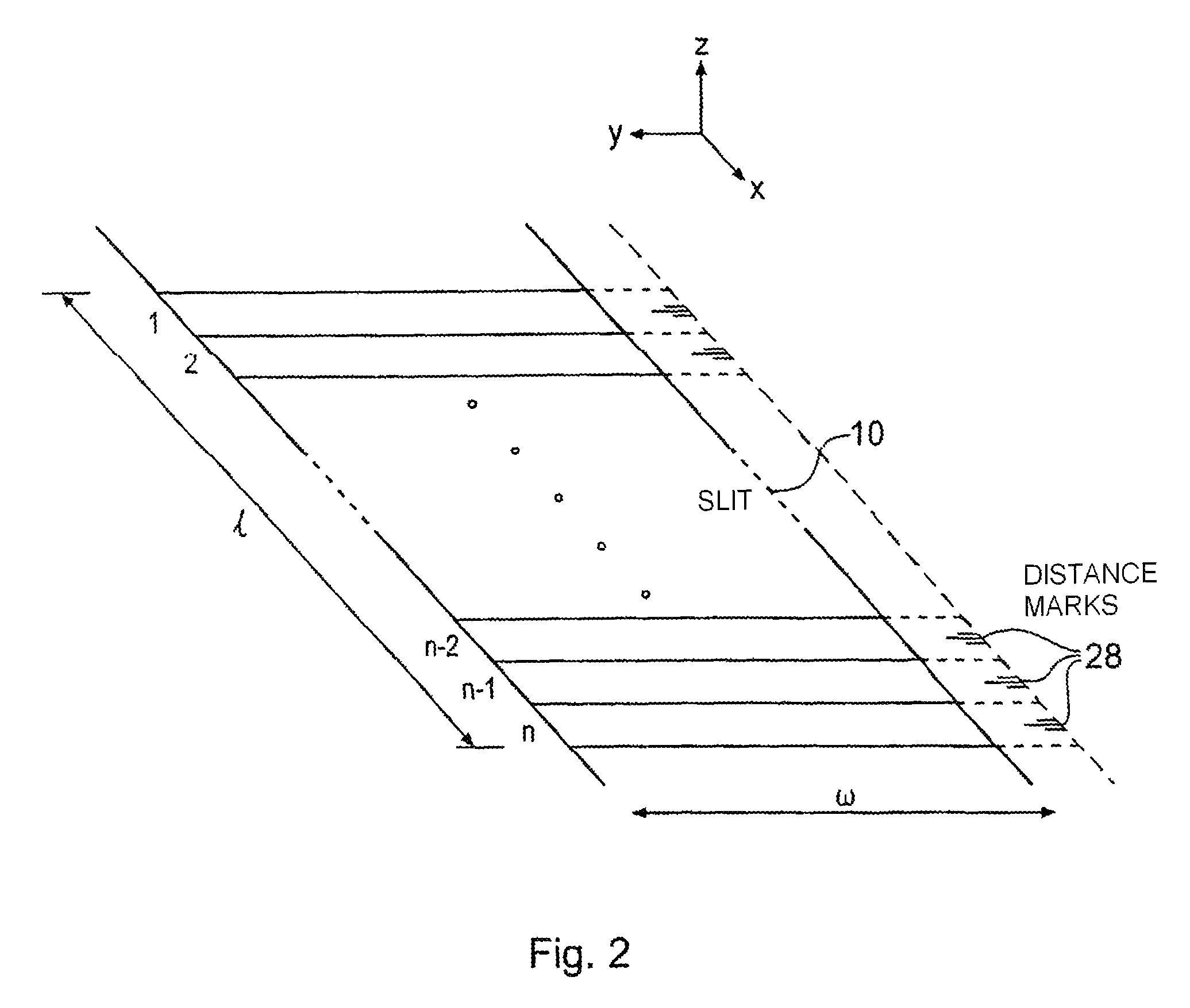Authenticity verification methods, products and apparatuses
a verification method and verification method technology, applied in the field of security methods, can solve problems such as inability to make an idea work properly, difficulty may be imposed, and criminals becoming more sophisticated
- Summary
- Abstract
- Description
- Claims
- Application Information
AI Technical Summary
Benefits of technology
Problems solved by technology
Method used
Image
Examples
Embodiment Construction
[0092]FIG. 1 is a schematic side view of a reader apparatus 1 embodying the invention. The optical reader apparatus 1 is for measuring a signature from an article (not shown) arranged in a reading volume of the apparatus. The reading volume is formed by a reading aperture 10 which is a slit in a housing 12. The housing 12 contains the main optical components of the apparatus. The slit has its major extent in the x direction (see inset axes in the drawing). The principal optical components are a laser source 14 for generating a coherent laser beam 15 and a detector arrangement 16 made up of a plurality of k photodetector elements, where k=4 in this example, labelled 16a, 16b, 16c and 16d. The laser beam 15 is focused by a cylindrical lens 18 into an elongate focus extending in the y direction (perpendicular to the plane of the drawing) and lying in the plane of the reading aperture. In an example prototype reader, the elongate focus has a major axis dimension of about 2 mm and a mino...
PUM
 Login to View More
Login to View More Abstract
Description
Claims
Application Information
 Login to View More
Login to View More - R&D
- Intellectual Property
- Life Sciences
- Materials
- Tech Scout
- Unparalleled Data Quality
- Higher Quality Content
- 60% Fewer Hallucinations
Browse by: Latest US Patents, China's latest patents, Technical Efficacy Thesaurus, Application Domain, Technology Topic, Popular Technical Reports.
© 2025 PatSnap. All rights reserved.Legal|Privacy policy|Modern Slavery Act Transparency Statement|Sitemap|About US| Contact US: help@patsnap.com



